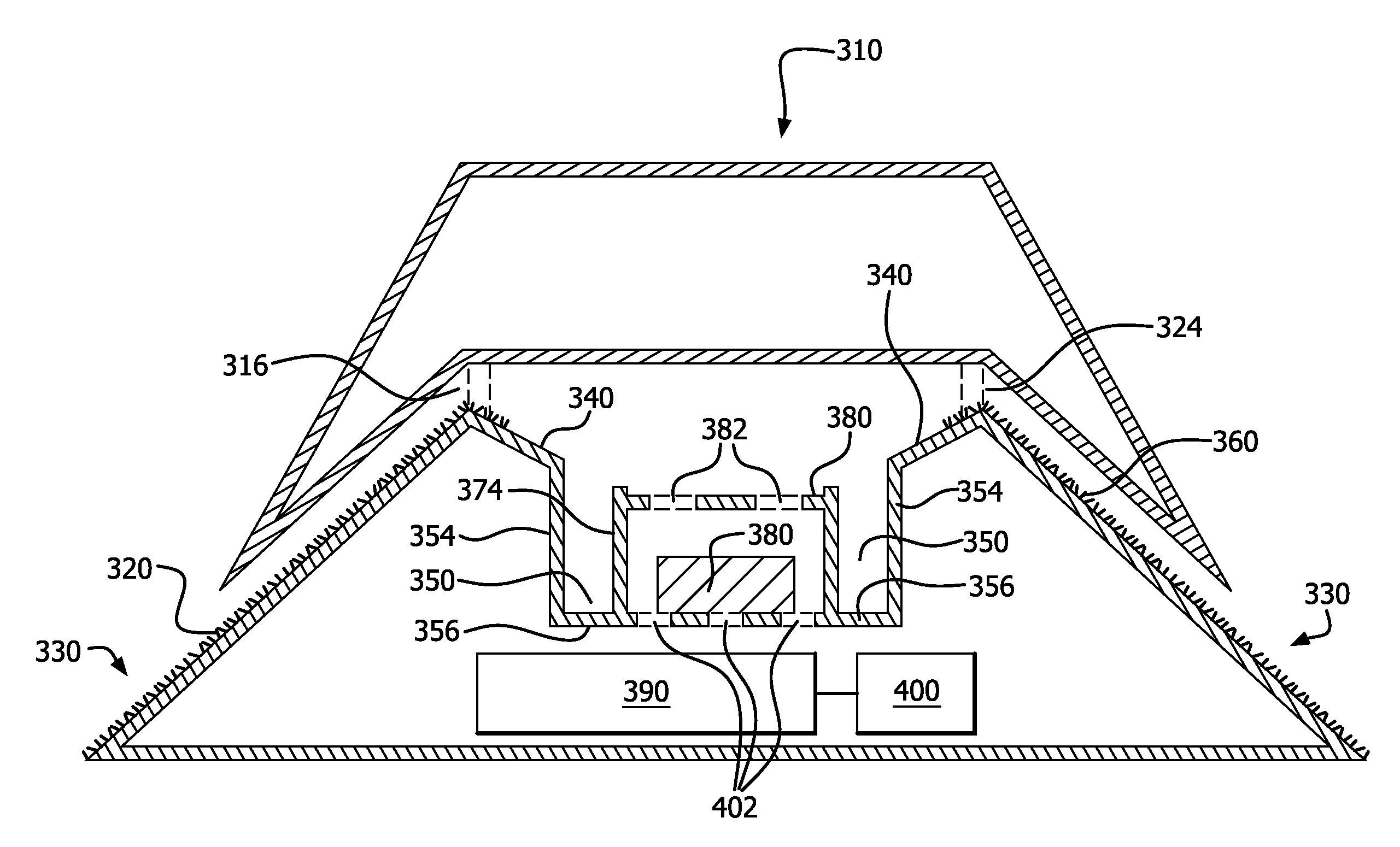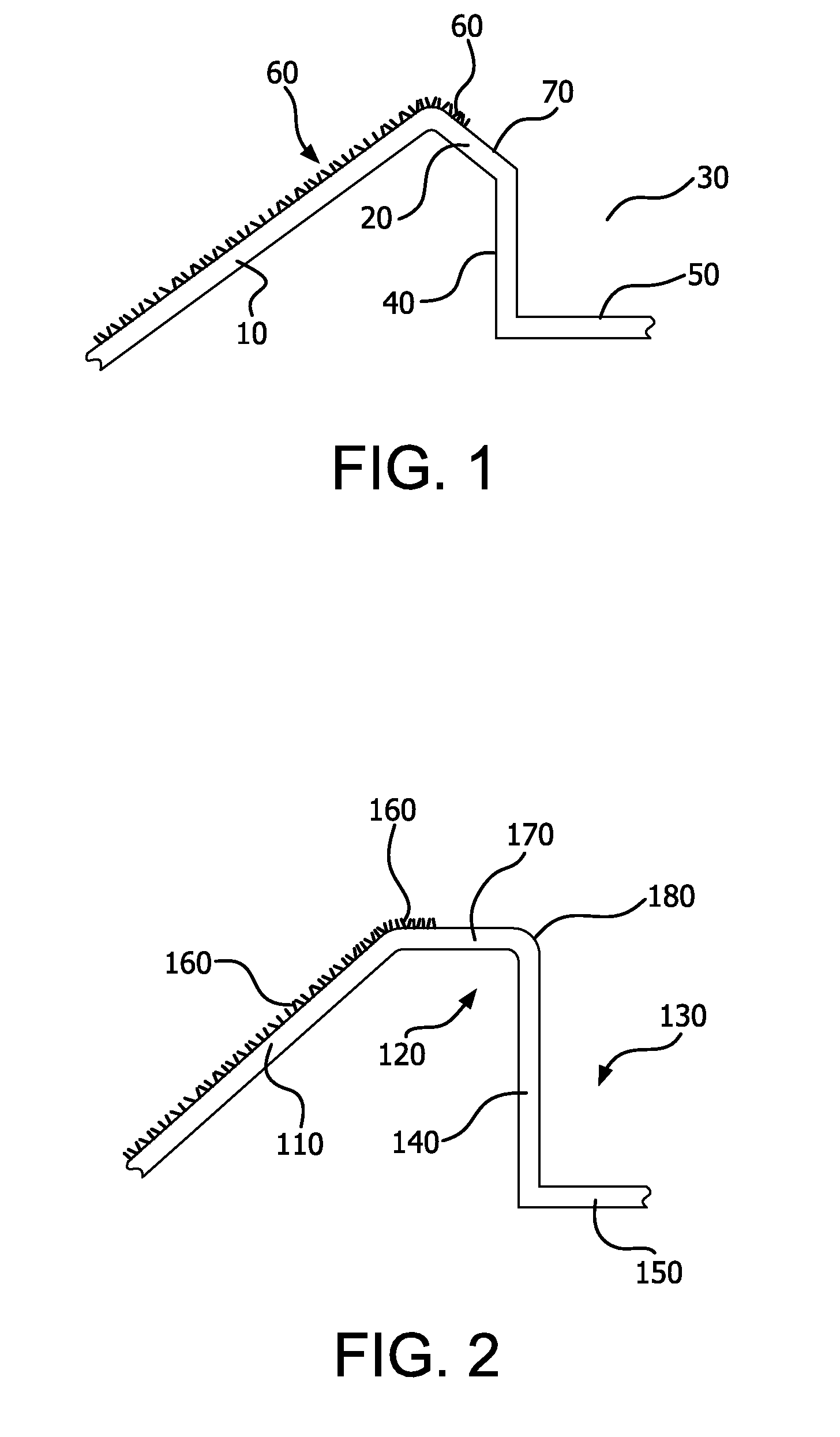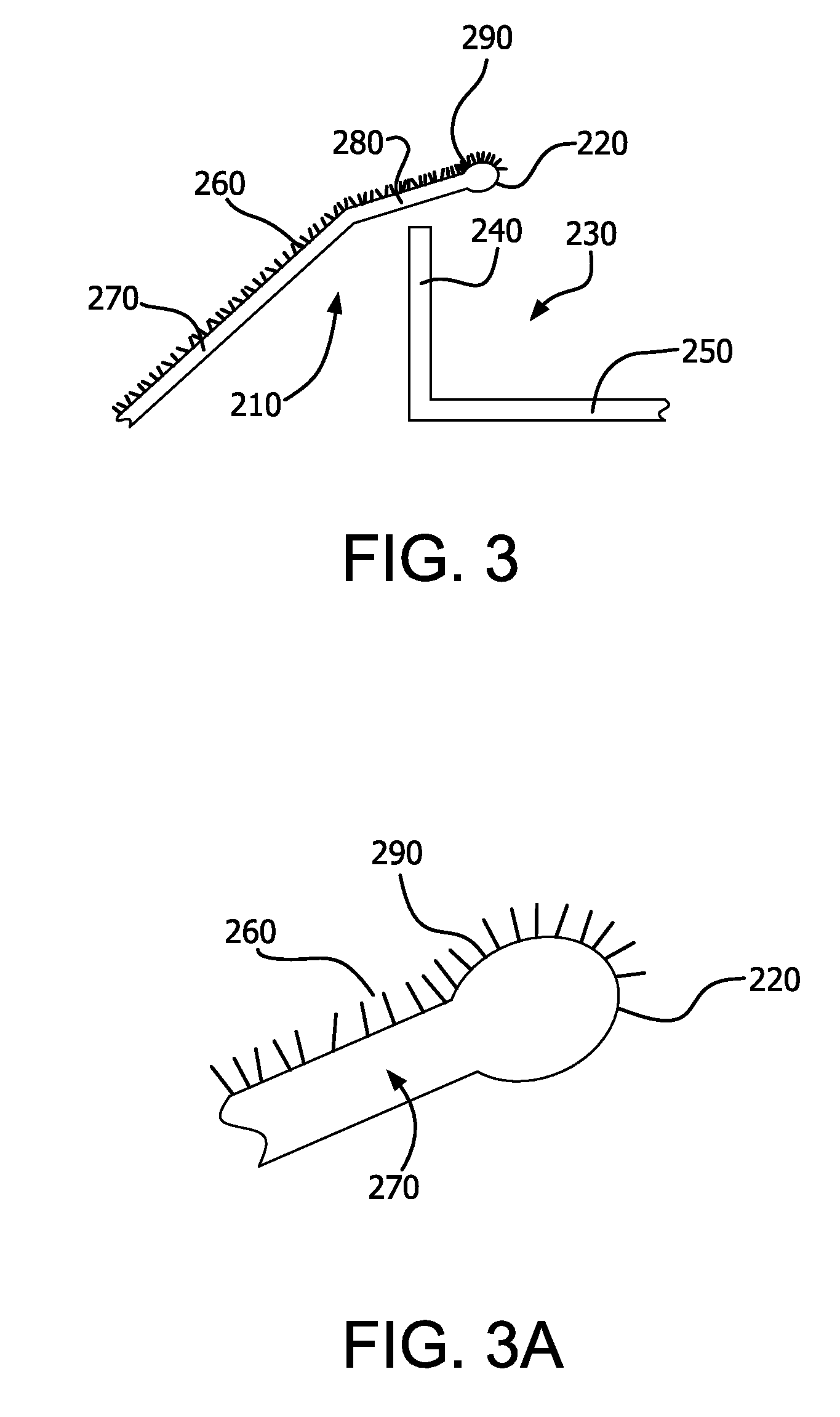Bed bug capturing device
a technology for capturing devices and bed bugs, which is applied in the field of bed bug capturing devices, can solve the problems of difficult and time-consuming detection and control of bed bugs, long time without feeding, and difficult to eradicate bed bugs
- Summary
- Abstract
- Description
- Claims
- Application Information
AI Technical Summary
Problems solved by technology
Method used
Image
Examples
example 1
[0066]Attempts were made to lure bed bugs of the species Cimex lectularius into a deadfall trap, The Dome™ Trap marketed by Trece Incorporated and employed in the industry to capture grain pests such as grain beetles, cigarette beetles and flour beetles. Although this trap is manufactured from molded hard plastic having an irregular outer surface, it was found that it was of insufficient roughness to act as a trap for bed bugs. When the external surface of this trap was roughened employing 120-320 grit sandpaper, it was found that bed bugs no longer avoided climbing the surface as being too slippery.
example 2
[0067]A 25 mm diameter smear of Tanglefoot (a sticky surface employed for trapping insects such as flies) was impregnated with 4 micrograms each of Hexenal and Octenal. Twenty-five unfed adult bed bugs of the species Cimex lectularius were placed directly on the trap. It was observed that none of the bed bugs were trapped by the sticky surface even though they were attracted to and standing upon its surface.
example 3
[0068]A planar coupon measuring 1.5 inch by 2.0 inches was prepared by molding polypropylene containing 20 percent by weight of glass fiber (“PP-G”). The average surface roughness of such coupon was measured using a Mahr Pocket Surf® portable roughness gage. The coupon was placed onto an inclined holder at about a 70 degree angle. An adult bed bug (Cimex lectularius) was placed onto the center of the coupon and visually monitored for about 5 minutes to determine if the bed bug was able to walk / climb the surface or was unable to hold onto the surface and fell off.
[0069]Additional coupons composed of polyethylene (“PE”); polyethylene that had been sanded with 100 grit sandpaper (“sanded PE”); and high density polyethylene (35 melt) (“HDPE”) were also evaluated. The results of such evaluation are summarized below:
PUM
 Login to View More
Login to View More Abstract
Description
Claims
Application Information
 Login to View More
Login to View More - R&D
- Intellectual Property
- Life Sciences
- Materials
- Tech Scout
- Unparalleled Data Quality
- Higher Quality Content
- 60% Fewer Hallucinations
Browse by: Latest US Patents, China's latest patents, Technical Efficacy Thesaurus, Application Domain, Technology Topic, Popular Technical Reports.
© 2025 PatSnap. All rights reserved.Legal|Privacy policy|Modern Slavery Act Transparency Statement|Sitemap|About US| Contact US: help@patsnap.com



